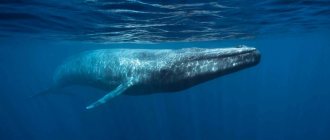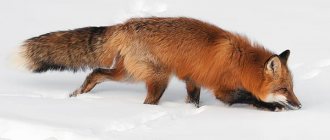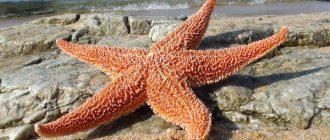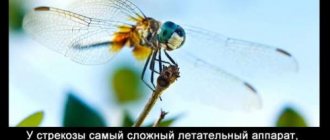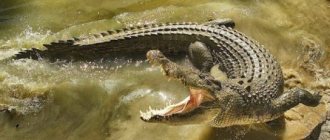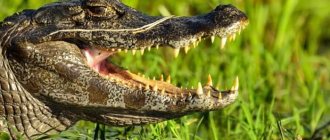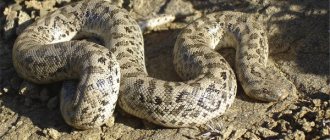Since ancient times, various peoples have attributed supernatural abilities to the crocodile, respected and feared it for its strength and dexterity, and asked for help in difficult life situations. But even today, in the age of the primacy and triumph of science, scientists know far from everything about these creatures. For example, the saltwater crocodile, the largest living crocodile, lives in such inaccessible places and is so strong that it is extremely rare for researchers to obtain a living, healthy specimen for study.
But science knows not so little about these creatures. Some facts related to crocodiles will be of interest to every wildlife lover.
How big can crocodiles be?
Saltwater-dwelling saltwater crocodiles (Crocodylus porosus), also known as estuarine crocodiles, are the world's largest living reptile. The average male can reach 5 m in length and weigh about 500 kg, while females are much smaller - up to 3 meters and 100 kg.
The largest saltwater crocodiles ever recorded was about 6.3 m long, and some remains suggest that even larger representatives of the species - up to 7 m - lived on our planet previously. It is possible that such large crocodiles no longer exist from -for extensive hunting of the largest individuals. It is estimated that these huge males weighed around 1500-2000 kg.
“Rasputin” on bass guitar: the Italian’s video in Russia collected 8 million views
Haircuts were not Aunt Tanya’s thing: Menshova remembered her first “stylist”
Serebryakov returned to Russia. Shukshina believes that he should not have left
Reproduction method
An important difference between reptile crocodiles and amphibians is their method of reproduction. In nature, they mate underwater, after which the female comes to land, digs a clutch in the sand near the water, where she lays up to a hundred eggs. Subsequently, the nest is sprinkled with small pebbles. A caring mother is on duty near the clutch, driving away all uninvited guests: snakes, various amphibians and birds that are not averse to eating delicious eggs.
A unique feature of the development of young crocodiles has been established, the sex of which will depend on the ambient temperature. If the temperature is more than 34 degrees, then only females hatch from the clutch at a time. But at temperatures of 30-34 degrees, only males develop. This feature makes it possible to maintain the required number of individuals of both sexes, which solves the problem of reproduction even in harsh conditions, including in small lakes and small rivers.
Immediately before birth, the babies give their mother a signal, after which she carefully digs up the clutch, helps the crocodiles get out of the nest and carries them in her mouth into the water to a safe place. Subsequently, for several weeks, the large animal guards a small bay or section of the coastal strip, where the babies grow quickly and feed on tadpoles, frogs, small fish, and various insects.
Can a man outrun a crocodile?
The short answer is yes.
Most crocodiles can reach speeds of 12–14 km/h in a short period. This is less than the running speed of a person. Of course, you can escape from the green giant if you are in good physical shape and your feet are wearing sports shoes.
Crocodiles have three main types of locomotion: crawling on their stomachs, walking, in which their legs push the body off the ground, and galloping, where the spine works in the same way as in a fast running horse or hare.
So, on land, a person has a chance of winning the race. But don’t even dream of defeating a saltwater crocodile in its element – water.
A new study has unexpectedly shown that crocodiles are very fast runners.
The ability of crocodiles to make swift but short attacking lunges on land has been known for a long time. However, a new study by American zoologists has shown that crocodiles are, in fact, very good at hiding their potential. In reality, these lumbering reptiles can run at very high speeds and, more importantly, in different styles.
Scientists have installed hidden video cameras at the Florida Zoological Park to observe crocodiles when they are unaware. The video captured dozens of cases where reptiles began to run, some reaching speeds of up to 18 km/h. In total, scientists studied the behavior of 42 individuals from 15 different species of crocodiles, caimans and alligators.
Alligators and caimans, for reasons still unknown, ran fast, but in a primitive, clumsy manner. However, at least eight species of crocodiles demonstrated other techniques: racing and galloping. In the first case, the animal pushes off with its front pair of paws while the back one is still in the air, and then repeats this movement in reverse. In a gallop, all paws move asymmetrically, alternately hitting the ground. This is the fastest way of movement for many animals, but it was performed by crocodiles almost for the first time in history. The video is definitely the first of its kind.
The smaller a particular individual was, the easier it was for it to raise its paws, and the better it galloped. This is likely a demonstration of a protective evolutionary mechanism that gives small individuals a chance to survive while the larger alligator relies on the strength of its jaws. So far, too little data has been collected, but the experiment continues.
Crocodile speed on land and water
The most unique thing about crocodiles is the speed at which they can move both underwater and on land. However, crocodiles can move quickly by crawling on land like a snake. The average speed of a crocodile on land can develop from 10-12 kilometers per hour. And in water they reach speeds of up to 40 km/h. In pursuit of prey, for example a bird, they can jump out of the water to a height of up to two and a half meters. The highest speed recorded during the movement of this large reptile on land reaches seventeen kilometers per hour. Although crocodiles move on land very quickly, they do not do so for long. In the event of a crocodile attack, you need to run away from it as quickly as possible and the running trajectory should be in the form of a zig zag. Why this is so is not difficult to guess. After all, a crocodile develops speed in a straight line, and if it has to run along the same trajectory, it will quickly get tired and will not be able to accelerate properly. These reptiles are very clumsy. The crocodile is a large reptile that lives in water. This predator belongs to the order of secondary aquatic vertebrates and is in the “reptiles” group. These creatures first appeared eighty-three and a half million years ago.
Maximum speed of a crocodile
The speed of a crocodile depends on the age of the animal and its physical condition. The maximum speed of a crocodile is 15 km/h. In biology, each animal develops maximum speed depending on its size and physical muscular abilities of the body.
The answer to the question what is the maximum speed in km/h and m/s that a crocodile develops when running. It is used for educational purposes in the study of nature in biology.
Can crocodiles live in salt water?
We already mentioned that they can, and this probably surprised many. After all, it is generally accepted that crocodiles live in rivers. This is not entirely true; salty ocean water can be just as attractive to huge reptiles.
Saltwater crocodiles have a huge range that extends from northern Australia to eastern India and southeast Asia. Reptiles inhabit coastal waters, not the open ocean. They often swim into fresh rivers.
These huge reptiles are so well adapted to life in salt water that they can spend days or even weeks at sea, drifting and swimming for hundreds of kilometers and possibly hunting along the way.
Colorful March. Brown snow fell in Colorado (USA)
Aries - focus on work: forecast for the spring equinox
128 TWh: why Bitcoin consumes a colossal amount of energy
Does a crocodile have a tongue?
Many people think that the chewing apparatus of a reptile is represented only by a large number of sharp teeth, but this is not so.
In fact, they have a tongue, but along its entire length it is attached to the lower jaw. It is difficult to move, but it still has muscles and cartilage.
This is why it is difficult for representatives of the class to chew food using only their teeth. To facilitate this process, they drag their prey into a cave or sandbank and wait for it to begin to rot.
Soft meat is much easier for them to chew. Despite this, the sensitivity of the crocodile's tongue is so increased that it can feel a small midge flying into its mouth.
How long do crocodiles live?
Saltwater crocodiles have long lifespans, with many living over 65 years - longer than any other crocodile species. It is possible that some marine reptiles can live for more than a century, but this has never been tested in the wild. In captivity, there have been several reports of crocodiles being over 100 years old. On the other hand, infant mortality is extremely high in saltwater crocodiles due to extensive predation, and only 1% of newborns will survive to adulthood.
Especially buildings that allow you to run fast
Structural features
The length of most crocodiles is 2-5.5 m. The largest species, the saltwater crocodile, reaches a length of up to 6.3 (potentially up to 7) meters. Among the smallest are Cuvier's smooth-faced caiman and the blunt-nosed crocodile, with maximum recorded lengths of 2.1 m and 1.9 m, respectively. Their appearance demonstrates adaptation to living in an aquatic environment: the head is flat, with a long snout (thereby reducing the resistance of the water when turning); body flattened; the tail is powerful, laterally compressed; The legs are quite short, but strong. There are 5 fingers on the forelimbs, 4 on the hind limbs (no little finger), connected by a small membrane. The eyes, with vertically slit pupils, are located on the top of the head, so that the animal can look out of the water, exposing only the nostrils and eyes.
Skeletal system
The skeleton of crocodiles, both extinct and modern, is distinguished by a number of clear features.
Postcranial skeleton
The spine of crocodiles has 60-70 vertebrae: 8-9 cervical, 10-11 thoracic, 4-5 lumbar (24 presacral in total), 2 sacral and 32-42 caudal. There are no clear differences between the last thoracic and first lumbar vertebrae, so the total number of thoracic and lumbar vertebrae is determined approximately. The bodies of all vertebrae, except the atlas, second sacral and first caudal, are procoelous, like those of lizards and snakes. The thoracic and lumbar sections of the spinal column have a high degree of mobility in the lateral and dorsoventral direction [26]. An important feature of the skeleton of crocodiles is the biconvex first caudal vertebra, which serves as a ball joint. This ensures high mobility of the tail as the main locomotor organ in water.
Sketch of a crocodile skeleton
The first nine vertebrae have ribs that do not reach the sternum - they form the neck. The cervical ribs, in addition to those associated with the atlas and epistropheus, have widely separated heads, with the dorsal one (directed towards the back) attached to the transverse process, and the main one to the parapophysis in the lower part of the vertebral body. Thus, a system of “arches” is formed, within which the cervical artery passes. There are usually ten to thirteen pairs of trunk ribs. The ribs of the posterior trunk vertebrae gradually shorten and merge with the transverse process. Gharials do not have the last three, while crocodiles and alligators do not have four or five body ribs. There are abdominal ribs, as well as the sternum - a complex cartilaginous structure connecting the ends of the ribs, the bases of the coracoids and the interclavicle. The so-called sacral ribs are large bones that are connected by joints to the transverse processes of the sacral vertebrae. There is no consensus whether they are true ribs or thickened transverse processes. However, they are not fused to the spine, and for this reason they are commonly called ribs.
The fore and hind limbs of crocodiles are morphologically similar to the limbs of mammals and are attached to the limb girdles in a similar way. The femur is longer than the humerus, causing the back of the body to be higher than the front. The forelimbs have five fingers, the inner three of which are equipped with claws. The hind limbs have four toes, the inner three of which also have claws. In the girdle of the forelimbs of crocodiles, the clavicle is lost, and the coracoids running in the dorsal-abdominal direction are elongated and in modern species are equal to the length of the scapula. These signs indicate more efficient work of the muscles that lift the body and retract the limb back. The pelvic girdle consists of the short ilium, wide pubis and short wide ischium. It is characteristic of the hind limb girdle that the two sacral vertebrae do not fuse into the sacrum, and the pubic bones do not participate in the formation of the acetabulum. In the skeleton of the hind limbs of crocodiles, the well-developed calcaneal tubercle, which is a powerful lever for flexing the foot, is especially important. This is due to the fact that crocodiles, when moving on land, can walk without lowering their body to the ground, which is much closer to the method of movement of mammals and terrestrial archosaurs.
Do crocodiles really sleep with one eye open?
An Australian legend says that crocodiles, even in their sleep, do not lose control of the situation - they close their eyes one at a time. Surprisingly, this old tale has been confirmed. Scientists have proven that the hemispheres of the brain of these animals rest in turns.
The sleep of many other animals, such as sperm whales and dolphins, follows approximately the same pattern.
Capricorn and 3 other zodiac signs whose glass is always half empty
For men over 50: a selection of spectacular haircuts to create an impressive look
“Start by finding yourself”: Tina Kandelaki gave advice to single women
№4
This is a truly dangerous reptile. The force with which it compresses the jaw can reach 340 atmospheres (specifically speaking about the Nile). For example, so that you understand the full power of the jaws of this reptile, let’s compare it with some other animals: lion - 41 atmospheres, tiger 71 atmospheres, grizzly bear - 81 atmospheres.
But there is another fun fact about his jaw. Despite all their power, they have terribly weak extensor muscles. So weak that you can simply squeeze their jaw with your hand, and he is unlikely to open it. It is this feature that has allowed scientists to study these reptiles in more detail.
Features of movement
Crocodiles seem clumsy, but some varieties are capable of running at speeds of up to 17 km per hour and galloping. Moreover, they are the only reptiles that, with this method of movement, place their legs under the body (when walking, they are widely spaced to the sides).
When urgently needed, reptiles are able to move several kilometers away from their habitat. When swimming, the speed reaches 40 km per hour, and only the tail is used for movement.
The ancient legend about crocodile tears came to us from the Patriarch of Constantinople Photius, who says that when eating a victim, the crocodile mourns it.
In fact, this feature is associated with an excess of salt in the blood of reptiles, which they flush out using special glands located at the edge of the eyes.
